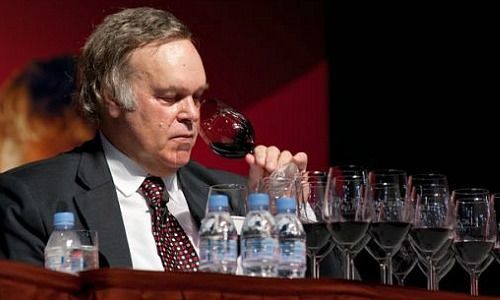With returns of more than 30 percent, vintage wines are outpacing other luxury goods. LGT's Andreas Vetsch explains why.
By Andreas Vetsch, a hedge fund analyst at LGT
We have Napoleon III to thank for the fact that wine also developed into something that could be invested in. It was for the 1855 world exhibition in Paris that he laid the foundations for this by having the various wines in the Bordeaux region classified into five categories according to quality.
This classification is still applied today. In some ways, it can be considered the precursor to modern marketing strategies, because it spurred the brand recognition and reputation of these wines and gave the Bordeaux region a mythical aura.
All Good Things Take Time
Today, Bordeaux accounts for 90 percent of the global market of investable wines. The highest quality classification comprises only five Premier Cru wines, which are produced by the Châteaux Lafite-Rothschild, Margaux, Latour, Haut-Brion and Mouton-Rothschild wine estates. These high quality wines require a lot of time to develop their full flavor – and their prices develop in much the same way.
A 2000 Châteaux Margaux, for example, was brought to the market in the summer of 2002 at a price of 400 dollars. For the first few years, the price remained unchanged, but from 2006 onwards, began to rise. It currently costs over 1,000 dollars and is expected to increase even further. The wine is now ready to drink and with every bottle that is opened, the price of the remaining bottles increases.
Drinking Window Extends to 2050
The expected drinking window for the 2000 Château Margaux extends to 2050 – so there is a lot of upward potential in terms of price. In addition to Bordeaux wines, other wines with a long life, for example French wines from the Burgundy or Rhone region, Italian wines from the Piedmont and Montalcino, as well as Spanish wines such as Ribera del Duero or Rioja, are well-suited as investments.
Looking beyond Europe, Sauvignons from the Napa Valley, Pinot Noirs from Oregon as well as Australian wines from the Barossa Valley and Margaret River are also good options.
Wine Labels as a Kind of Calling Card
Objective factors play an important role in how the price of a wine is established. These include characteristics that even before purchasing, can be found on the label of a bottle, such as the winery or the vintage. A Château Haut-Brion, for example, is the best wine produced by the Haut-Brion estate. It is a fully fermented dry wine with a ruby red color that has a comparatively low alcohol content.
In addition to the name, the vintage is also of key importance because good wine requires a lot of warmth and sunlight when the blossoms develop into grapes. Some occasional rain is also needed, but during the harvest period, the conditions must be dry. An optimal combination of sun and water results in exceptional vintages with an enormous upside in terms of price – as Galileo Galilei once said: «Wine is sunshine held together by water».
The Aging Potential
In addition to objective factors, sensorial characteristics such as the taste in the glass or mouth as well as the finish play a key role in pricing. Experts use terms such as complexity, character and aging potential to describe the quality of a wine.
With just a few words in their wine ratings and tasting reports, they can make a significant impact on the behavior of wine consumers (and investors).
Personal Wine Advisor to the Queen
Although countless experts exist, only a very small, elite group receives worldwide attention. These include Robert Parker, James Suckling, Neal Martin and Jancis Robinson. They reach a broad readership through their magazines and newspaper columns. The influence these critics have is enormous and it is therefore no surprise that Robert Parker had his nose and palate insured for one million dollars. This gave rise to his nickname the «Million-Dollar Nose».
Jancis Robinson, on the other hand, has an interesting job on the side: in addition to her column in the «Financial Times» and her own blog, she is also the personal wine advisor to Queen Elizabeth II.
Emerging Markets Important Drivers
Million-Dollar Nose or not, at the end of the day, luxury goods such as investable wines are also impacted by the macroeconomic environment. At the height of the financial crisis in 2008, the wine benchmark Liv-ex Fine Wine 100 Index fell 22 percent.
The structural uncertainties in China in 2011 also put downward pressure on the price of wine and commodities. The global economic upturn and the growing demand from emerging markets, however, resulted in a recovery – and the environment remains promising, as found in a recent study by Bain & Company. Europe has recently recovered from economic uncertainties and the luxury goods industry expects to see a significant sales gain.
Demand in emerging luxury goods markets such as China, Russia and the United Arab Emirates continues to grow. The Chinese, who are enthusiastic about wine, actually look set to reach new highs. Due to local tax cuts, the domestic market for luxury goods is flourishing and the well-to-do Chinese are once again starting to buy more in Europe.
In Vino Reditus
Although global production of top wines has been expanded in recent years, supply cannot keep up with the unbridled rise in demand. The surface area and number of top locations are limited and the best wine estates can only produce a limited amount of grapes each per hectare. For the time being, these supply and demand dynamics will continue to push prices upward.
The potential for diversification further increases the attractiveness of this asset class. Investable wines have therefore not surprisingly developed into the most popular luxury good and if investors are aware of the price drivers that have been described, they can also achieve good returns with wine in the future. It would thus appear that not only the truth lies in top wines, but significant returns as well. In this sense, in addition to the adage «in vino veritas» one could also say «in vino reditus».
 Andreas Vetsch is a hedge fund analyst at LGT. His area of expertise is trading strategies. Before joining LGT in 2012, he studied at the University of St. Gallen, where he received a master’s in banking and finance and a second degree in business journalism. A sports enthusiast, Andreas Vestch enjoys spending his free time biking, hiking or on the slopes.
Andreas Vetsch is a hedge fund analyst at LGT. His area of expertise is trading strategies. Before joining LGT in 2012, he studied at the University of St. Gallen, where he received a master’s in banking and finance and a second degree in business journalism. A sports enthusiast, Andreas Vestch enjoys spending his free time biking, hiking or on the slopes.











